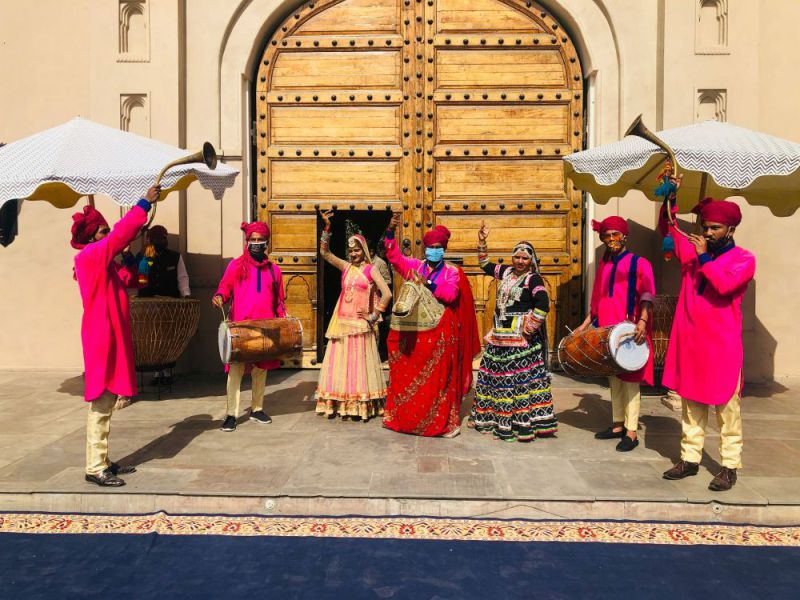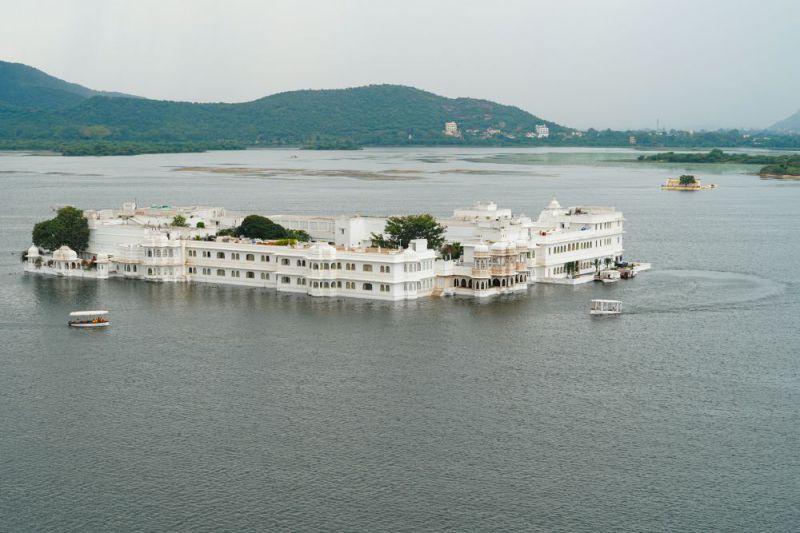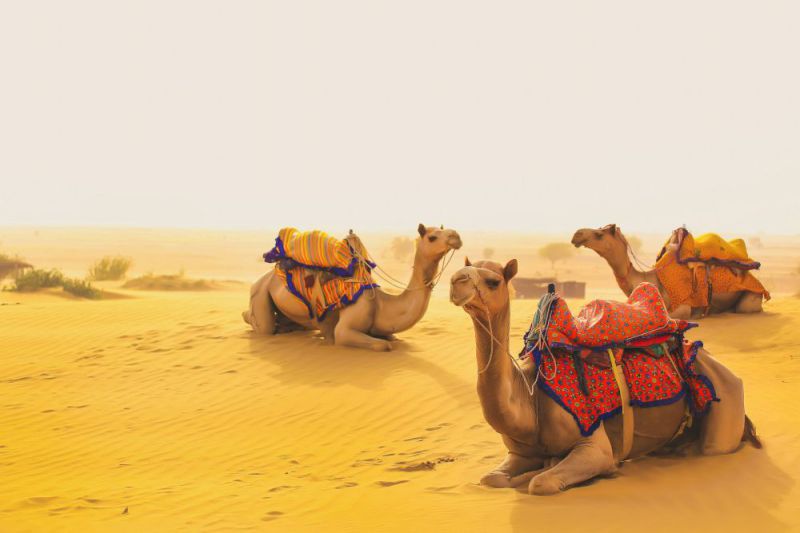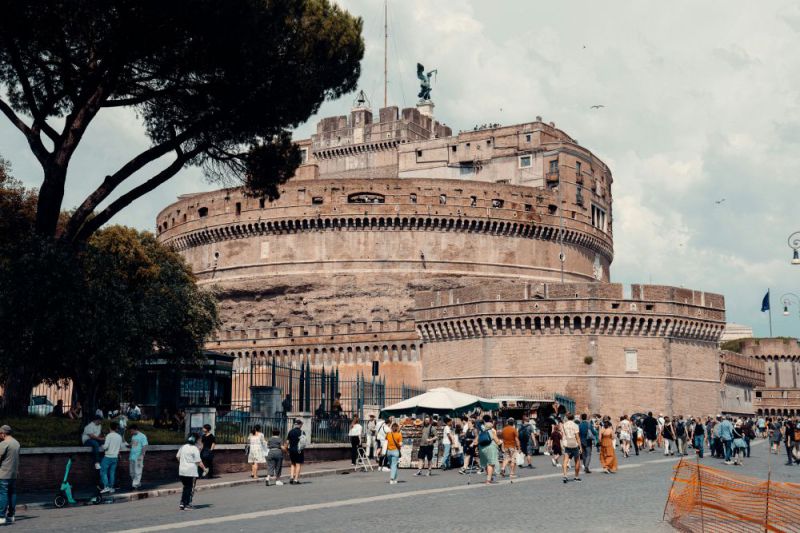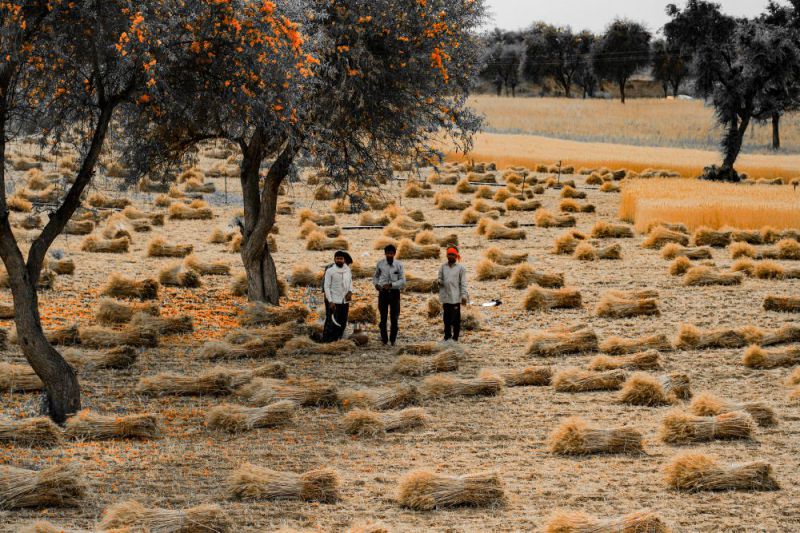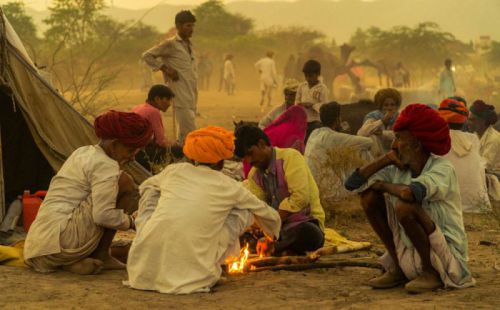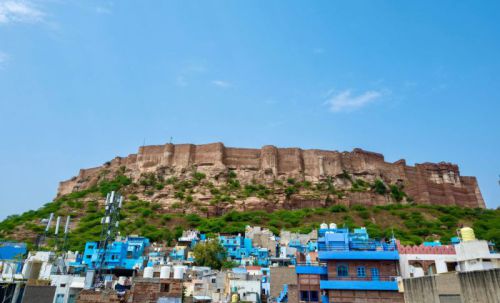| Area |
: |
342.239 km2 |
| Population |
: |
70’000’000 / 200 pro km2 (2024) |
| Capital |
: |
Jaipur |
| Districts |
: |
33: Ajmer, Alwar, Banswara, Baran, Barmer, Bharatpur, Bhilwara, Bikaner, Bundi, Chittorgarh, Churu, Dausa, Dholpur, Dungarpur, Ganganagar, Hanumangarh, Jaipur, Jaisalmer, Jalor, Jhalawar, Jhunjhunun, Jodhpur, Karauli, Kota, Nagaur, Pali, Pratapgarh, Rajsamand, Sawai Madhopur, Sikar, Sirohi, Tonk, Udaipur. |
| Topography |
: |
In the northwest, lies the Thar Desert. From southwest to northeast, the Aravalli mountain range crosses the country, with its highest peak being Guru Sikhar, at 5,643 feet (1,720 meters). To the east and southeast, fertile plains extend towards the Deccan Plateau in the southeast, with elevations reaching up to 4,265 feet (1,300 meters) above sea level. |
| Vegetation |
: |
In the northwest, sparse desert vegetation consists of a few shrubs and grasses, with deciduous thorn forests in the Aravalli mountain range. On the other side of this watershed, the region boasts more lush, subtropical vegetation, including rhododendron forests filled with orchids; widespread agricultural use of flat surfaces is also prevalent. |
| Wildlife |
: |
In the southeastern part of the state, Bengal tigers and leopards reside, along with other protected species such as sloth bears, golden jackals, honey badgers, small mongooses, gazelles, antelopes, and many others, especially in national parks. The bird diversity here is also remarkable. Species like the rufous treepie (Dendrocitta vagabunda), the colorful white-breasted kingfisher (Halcyon smyrnensis), and raptors like the spotted owlet (Athene brama) and black-shouldered kite (Elanus caeruleus) will delight birdwatchers. |
| Climate |
: |
Rajasthan is an extremely dry state that benefits very little from the monsoon. The Aravalli mountain range, which runs southwest to northeast across the country, acts as a watershed and is responsible for the formation of the Thar Desert in the northwest. |
| Temperatures |
: |
Example of Jodhpur: Annual minimum temperatures in December and January reach around 46°F (8°C) at night, and during the day, the temperature ranges between 69.8°F (21°C) and 73.4°F (23°C). These temperatures rise in the months of May to July, with nighttime temperatures averaging 80.6°F (27°C), and daytime highs reaching up to 118.4°F (48°C). |
| Rainfall |
: |
Rajasthan experiences very little precipitation, with less than 19.7 inches (500 mm) of rainfall annually. Of this, 80% occurs during the monsoon months of June, July, and August. |
| Languages |
: |
Hindi (Rajasthani with various dialects), Bhili, Punjabi, Urdu, English |
| Ethnicities |
: |
Mainly Hindus (at least 85%) of different castes, along with a minority of tribal people (Adivasi), including about 6% Mina and 6% Bhil. |
| Religions |
: |
88.5% Hindus, 8.5% Muslims, 1.5% Sikhs, 1.2% Jains |
| Economy |
: |
Rajasthan's economy is largely based on the cultivation of wheat, barley, millet, corn, cotton, and legumes, as well as animal husbandry with sheep, goats, and camels. The state also has an industry for processing cotton and sheep wool, including carpet weaving mills. The Aravalli mountain range is relatively rich in mineral resources, with lead, zinc, mica, gypsum, and marble being mined here. |
| Getting their |
: |
The most common and efficient way is by train, as there are several express trains that connect Delhi to major cities in Rajasthan, such as Jaipur, Jodhpur, Udaipur, and Ajmer. The journey by train offers both comfort and scenic views of the countryside. Alternatively, you can opt to travel by road, with well-maintained highways and buses connecting Delhi to Rajasthan’s major cities. The drive, though longer, provides an opportunity to witness the rural landscapes and vibrant life along the way. For those with limited time, flying is another option, with frequent domestic flights from Indira Gandhi International Airport in Delhi to Rajasthan’s airports in Jaipur, Udaipur, Jodhpur, and others, ensuring a quick and convenient journey. Regardless of the mode of travel, Rajasthan’s accessibility from Delhi makes it a perfect addition to your Indian itinerary. |
| Visa / Entry permit |
: |
To enter India, a passport valid for at least six months and a visa are required; special permits may be required in remote areas and to visit sanctuaries and national parks. |
 ENG
ENG
 DE
DE

